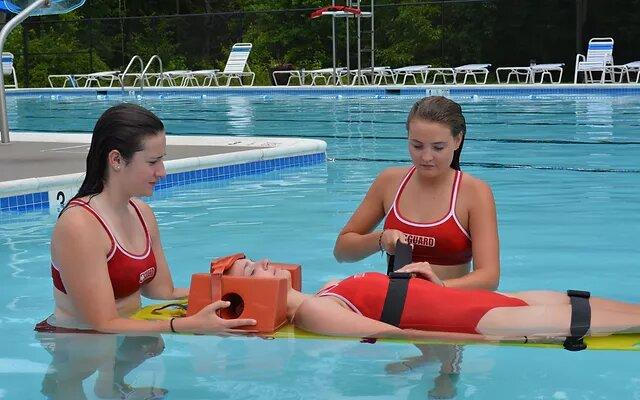Lifeguarding in California 2025: Beaches, Requirements, and Jobs
Lifeguarding in California has always been a prestigious and demanding profession, but in 2025, it’s more dynamic than ever. From...

Lifeguarding in California has always been a prestigious and demanding profession, but in 2025, it’s more dynamic than ever. From patrolling iconic beaches to meeting updated certification requirements, lifeguards in California play a vital role in public safety and ocean conservation. Whether you’re considering lifeguarding as a seasonal job or a long-term career, understanding the latest expectations and opportunities is crucial.
Below is a comprehensive guide to lifeguarding in California, covering key beaches, job expectations, training requirements, and employment trends.
1. Popular Beaches Where Lifeguards Are in High Demand
California boasts over 800 miles of coastline, attracting millions of visitors each year. Some beaches are especially known for requiring a strong lifeguard presence due to heavy surf and high visitor volumes.
Key Beaches:
- Santa Monica Beach – A bustling urban beach that sees tourists year-round.
- Venice Beach – Known for its crowds, boardwalks, and water activity.
- Malibu – Offers both scenic views and powerful waves, requiring experienced guards.
- Huntington Beach – Also known as “Surf City,” it often hosts surf competitions.
- La Jolla Shores – A family-friendly beach, but still prone to rip currents.
Each of these beaches requires vigilant, well-trained lifeguards to manage crowds and respond to emergencies.
2. Lifeguard Certification and Training Requirements in 2025
Becoming a lifeguard in California involves more than just strong swimming skills. In 2025, updated regulations have further professionalized the role.
General Requirements:
- Minimum Age: Usually 16 or 18, depending on location and agency.
- Swimming Ability: Must pass timed swimming tests (e.g., 500 meters under 10 minutes).
- CPR and First Aid Certification: Essential for all lifeguards; must be current.
- Open Water Training: Required for ocean lifeguards to handle surf and tidal conditions.
- Scenario-Based Assessments: Many agencies now require mock rescue simulations during hiring.
These qualifications ensure that lifeguards are physically prepared and mentally capable of managing high-pressure situations.
3. Types of Lifeguarding Jobs Available
There are several categories of lifeguard roles in California, each with different responsibilities and employment terms.
Types of Positions:
- Ocean Lifeguards: Stationed along beaches, focusing on surf rescue and swimmer safety.
- Pool Lifeguards: Usually based at community or private pools, monitoring swimmer behavior.
- Seasonal Lifeguards: Hired primarily in spring and summer months, especially in tourist-heavy areas.
- Permanent Lifeguards: Employed year-round, often involved in training, public education, and enforcement.
Understanding the job type helps individuals find positions that match their skills and career goals.
4. Employment Outlook and Salary Expectations
The demand for lifeguards remains high in California, especially in coastal counties. Climate change, increased tourism, and growing awareness of water safety have expanded the need for trained professionals.
2025 Trends:
- Higher Pay Rates: Some counties have increased pay due to labor shortages and inflation.
- Flexible Shifts: Seasonal roles often allow students or part-time workers to find suitable hours.
- Housing Assistance: In areas with high cost of living, agencies may provide housing stipends.
Average Salary (2025 Estimates):
- Entry-Level Lifeguards: $18–$22/hour
- Experienced Lifeguards: $25–$35/hour
- Supervisory Roles: $60,000+ annually, depending on agency and experience
This makes lifeguarding not just a rewarding but also a financially viable career in many parts of the state.
5. Physical and Mental Readiness
Being a lifeguard is physically demanding and mentally challenging. Training alone isn’t enough—you must be consistently fit and emotionally resilient.
Fitness Requirements:
- Regular swimming and cardio workouts
- Strength training for rescue operations
- Flexibility and injury prevention exercises
Mental Toughness:
- Ability to stay calm under pressure
- Quick decision-making
- Handling emotionally intense situations (e.g., drownings or rescues)
Agencies often look for individuals who demonstrate strong character and leadership in addition to technical skill.
6. Environmental Awareness and Public Education
In 2025, lifeguards are more than just rescue professionals—they also play a role in environmental protection and public education.
Expanded Roles:
- Rip Current Awareness: Educating visitors on how to avoid dangerous areas
- Marine Life Interaction: Advising on jellyfish stings or shark sightings
- Environmental Stewardship: Encouraging beach cleanliness and safe wildlife interaction
This added responsibility reflects a broader commitment to community safety and ecological sustainability.
7. How to Apply for Lifeguard Jobs in California
Applying for a lifeguard job in California usually involves both physical testing and interviews. Each county or city may have its own process.
Application Steps:
- Search Local Government Websites: Most job postings are listed on city or county HR portals.
- Attend Tryouts: Physical tryouts are mandatory and often competitive.
- Submit Certifications: Include CPR, First Aid, and any water safety training credentials.
- Background Checks: Required for public safety jobs, especially around children.
Proactive candidates should apply early, especially for summer positions, as tryouts often begin in winter or early spring.
Conclusion
Lifeguarding in California in 2025 is a high-responsibility job that offers rewarding experiences, competitive pay, and opportunities for personal growth. With updated safety protocols, expanded duties, and growing demand, it’s an ideal time to consider entering the field. Whether you’re drawn by the beach lifestyle, a passion for helping others, or a long-term career in public service, lifeguarding provides a meaningful path forward.
By staying informed, physically prepared, and professionally certified, you’ll be ready to take on the challenges and rewards of lifeguarding in California.







